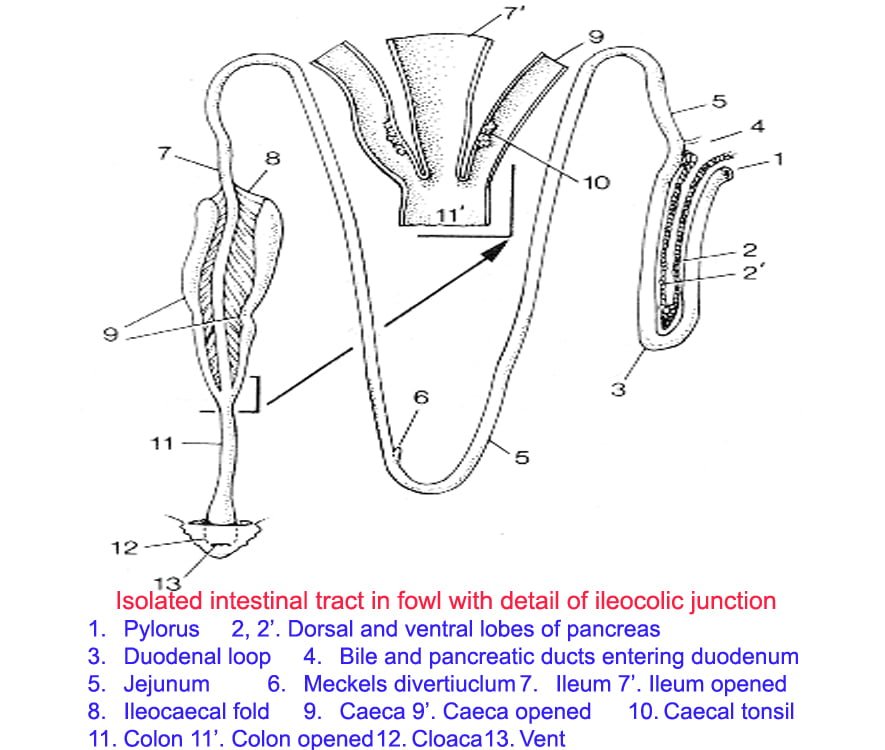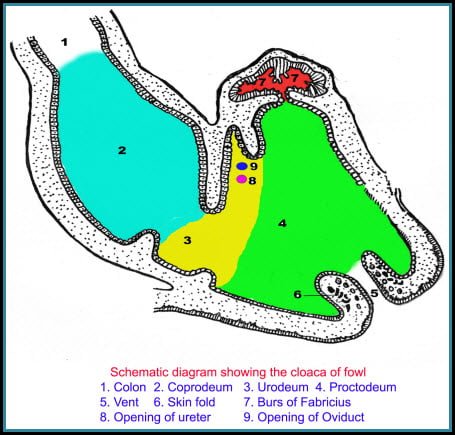TABLE OF CONTENTS
Large intestine of Fowl
The large intestine of fowl consists of the two caeca and the colon. The line of demarcation between the ileum and the colon is at the openings of the caeca
The caeca are two in number, left and right and are two blind tubes about 16 to 18 cm long extending from the ileo-colic junction on either side of it, forwards to the liver and are doubled on themselves

They are connected with the gastro-intestinal tract at the junction between the ileum and colo-rectum
Each of these tubular structures has a length of about 15cm
They extend first cranially and then caudally parallel to the ileum
Each caecum has three parts-proximal, middle and distal
The proximal part is narrow and is connected with the intestine. Middle part is wide and the distal part is expanded
The distal part terminates in the form of a pointed end. The wall contains lymphoid tissue, mostly at the proximal part. This lymphoid tissue is known as caecal tonsil
The colon or colo-rectum is short straight tube, (without any demarcation between colon and rectum), extending backwards from the openings of caeca, to terminate behind at the cloaca.
CLOACA OF FOWL
The terminal part of the intestinal tract consists of three compartments separated by contractile folds of mucous membranes

- The cloaca is a tubular structure opening on the exterior, and is the common opening for the digestive, urinary and genital systems
- It is divisible into three parts; coprodeum into which the colon empties
- It is ampulla like dilated sac as the direct continuation of the colon
- It receives and temporarily holds the feces passed into it from the colon
- The next portion, the urodeum, it is less extensive compartment into which the two ureters open into the urodeum in both sexes and in males the seminal duct and in females through a slit-like aperture, the oviduct opens into this segment
- The last portion- the proctodeum is the short, most caudal segment of the cloaca, ends at the vent
- A small opening in its dorsal wall leads to the cloacal bursa. A small dorsal proctodeal gland is found caudal to the bursa
- Vent is the horizontal slit like opening of the proctodeum
- An opening leads from the dorsal wall to the bursa of Fabricius – a blind sac like unpaired structure found best developed in chicken about four months of age
- It usually disappears at one year of age.

